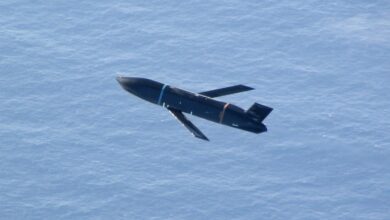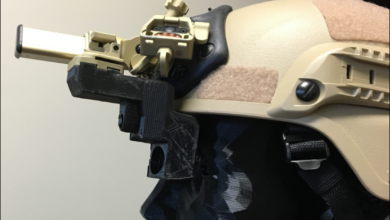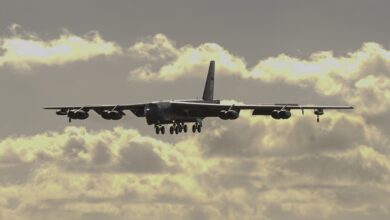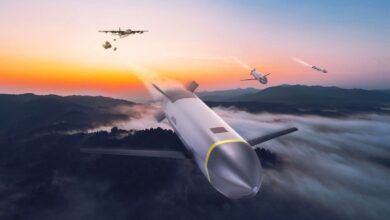US Air Force Developing Next-Gen Agile Missile
The US Air Force Research Laboratory (AFRL) is developing a next-generation missile concept with a rapidly pivoting forebody.
The missile’s “active morphing” capability increases its range and effectiveness against highly maneuverable targets at a limited cost.
The missile’s agility is achieved through the articulation control actuation system (ACAS), a “composite high-strain skin structure that envelops an internal electromagnetic actuation system,” the AFRL explained.
“With a single articulated joint, the missile forebody is used as a flight control surface to augment air-to-air axisymmetric missile effectiveness.”
Articulation Control Actuation System
The ACAS is a leap in weapons technology that involves fixed outer mold line geometries, a “design compromise over the various stages of weapon delivery (e.g. launch, boost, cruise, terminal homing, end game).”
Present missile control actuation systems responsible for range and maneuverability negate each other’s characteristics, affecting the missile’s overall performance.
The trade-off is between range and maneuverability. For example, the fins are suitable for range but could be better for maneuverability and agility, while the canards, wings, jets, and thrust vectoring are the opposite of fins.

Morphing Weapons Technology
The morphing weapons technology-based ACAS allows “continuous [outer mold line] change to tailor a performance to each phase of flight,” the AFRL explained.
“As a conformal surface, aerodynamic drag is not affected in midcourse. In terminal homing, the large surface area of the missile forebody provides tremendous agility and moderate improvements to maneuverability.”
“As a result, with sufficiently low ACAS SWaP (size, weight, and power) and sufficiently high performance, a significant net benefit to missile performance is obtained.”

Sixth-Gen Missile
The ACAS missile is intended to be fitted onto the Next generation air dominance program, including a sixth-generation fighter aircraft.
The missile concept is considered suitable for both air and ground-launched missiles.
The AFRL has learned to design, fabricate, integrate, and employ the ACAS on a missile after researching it for six years under the Mutant program.
The laboratory recently announced the advance of ACAS technology readiness with three ground tests scheduled this year through 2024.
The tests will be performed on the Hellfire missile, which is not necessarily the technology’s intended application platform.












